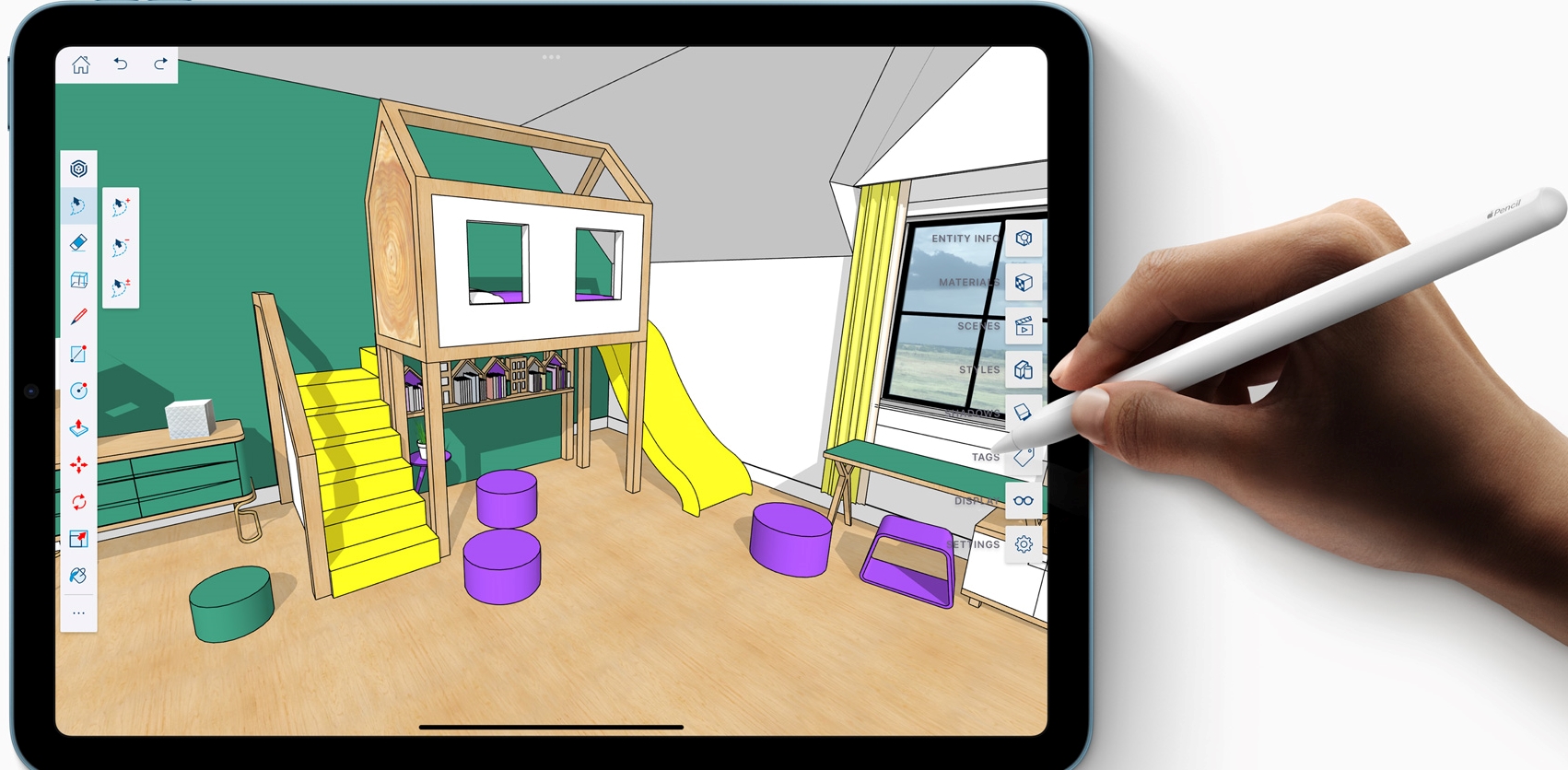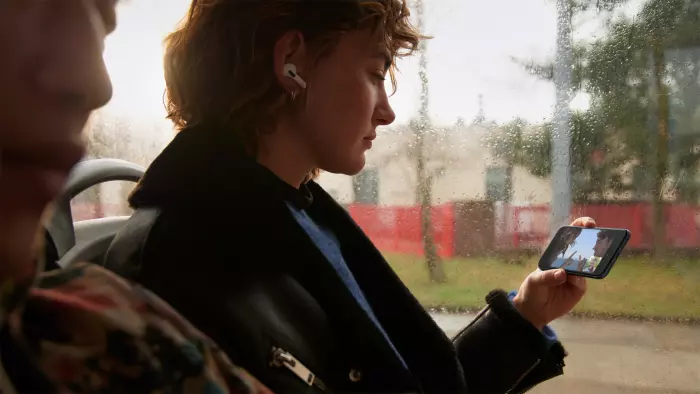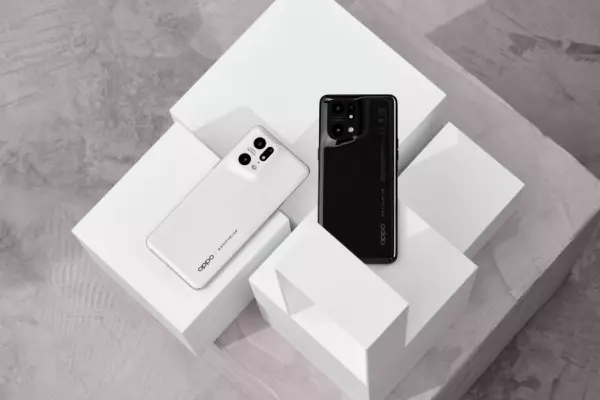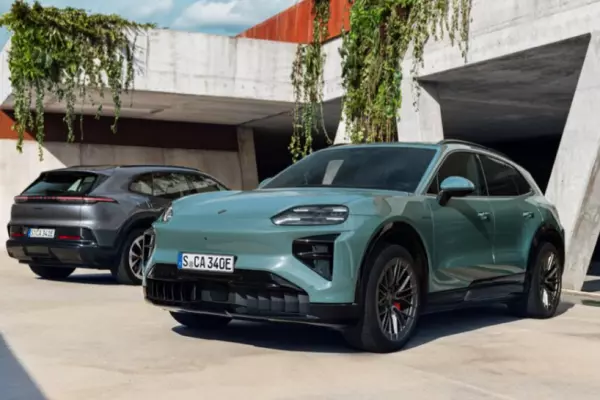The new iPhone SE is a reminder you can buy the cheapest iPhone that Apple sells and be perfectly happy.
At $799, you have access to iMessage, FaceTime, Apple Arcade, Apple Books, Apple TV, and all the other Apple services you need to have an Apple device to use. You get the same access to these as you would if you paid at least $1999 for an iPhone 13 Pro Max.
Apple has even crammed the exact same processor into the SE as all the iPhone 13 models have, the very capable A15 chip. It means the SE handles apps with ease and outperforms Android phones of the same price.
But Apple knows consumer psychology. The SE looks like the iPhone 6 that came out in 2014. Fast forward to 2022 and the design is better, with better components, 5G, improved Touch ID fingerprint sensor, a glass back, wireless charging, and better cameras. But after you’ve put it in a case, it might feel just like a phone you already own – or owned seven years ago.
You might also be tempted to buy a pricier iPhone 13 because it has a larger and better screen, more and better cameras, more colour options, and better battery life. But do you need it?
If you buy your phones outright, the jump from a $799 SE to a $1429 iPhone 13 is significant. You might then consider buying an iPhone on a contract with a subsidised monthly cost to your mobile operator.
By this stage, you’ll notice the monthly price difference between an iPhone 13 and flashier-still iPhone 13 Pro is negligible. Before you know it, you might have Apple’s most expensive phone in your pocket rather than the SE, its cheapest.
Apple knows how to make great entry-level products, but it also sure knows how to nudge you to a more expensive option.
 Look familiar? The SE range looks similar to the 2014 iPhone 6.
Look familiar? The SE range looks similar to the 2014 iPhone 6.
Airs and graces
It’s a similar story with the new iPad Air. It has Apple’s very powerful M1 chip in it, the same found in the iPad Pro, but the Air is $300 cheaper and has the same design and screen size.
The new tablet runs like a dream hooked up to Apple’s Magic Keyboard accessory (a spicy $549), a full keyboard that turns the Air into a laptop-style computer with trackpad. There’s a responsive Touch ID fingerprint sensor built into the power button, a USB charger in the box (iPhones don’t come with chargers any more), and just-about-all-day battery life (it can last an 8-hour day away from a plug).
I really enjoy its small portable size and the option, on the cellular mode that costs more, to add a 5G plan for easy internet access.
Apple says the powerful M1 chip means you can use professional-grade apps on the Air without forking out for a dearer iPad Pro. It can handle Procreate, Photoshop, Lightroom, GarageBand – any high-performance pro apps in the App Store will run well on the Air.
But with only 64GB storage on the cheapest model, you’re going to run out of room fast after you’ve filled it with games, apps, Netflix downloads, and your photo library.
The company doesn’t offer a 128GB option, so you must fork out $1299 for 256GB, leaving you only $50 shy of a 128GB 11-inch iPad Pro. The Pro has a display with a 120Hz refresh rate rather than 60Hz so things look and feel smoother, Face ID biometrics rather than Touch ID, Thunderbolt capabilities for faster data transfer via the USB-C port, and an additional ultra-wide camera on the rear.
The Air only makes sense at the cheaper price point, but 64GB is not enough unless your entire workflow is in the cloud. Apple is nudging you to the top of the range.
Add to that the $549 keyboard and $239 for the second-gen Apple Pencil that’s necessary if you want to draw in creative apps or sign documents and you’re looking at just over $2000 for the set-up.
If you don’t need the M1’s power and just want a tablet, you might consider the regular iPad, which at $569 is a bit of a steal. It’s slim, runs well, works with the first-gen Apple Pencil, and has the same clever Centre Stage FaceTime camera as the Air that positions you in frame automatically.
But wait! Only 64GB. The 256GB version is $819. Still, with a cheaper $259 keyboard to make it laptop-esque, that’s a decent saving from the $2000 we were at a moment ago.
 The iPad Air features Apple's powerful M1 chip.
The iPad Air features Apple's powerful M1 chip.
Got your number
The iPhone SE has incredibly good performance for the price. I couldn’t see stutter or slow-down no matter how many apps I threw at it.
It’s the only iPhone with one rear camera but it’s a very good lens. The camera app has the fun photographic-styles feature from the iPhone 13 that lets you pick various processing styles to make photos richer in contrast or warmer or cooler in tone. You can’t even find this on the iPhone 12.
Shots in daylight look superb but Apple has not included the night mode from pricier phones that the SE’s hardware could definitely handle. There’s also no optical zoom, either, so any zoom is digital, with less-than-impressive results.
Apple sent me the 256GB version for review, which retails for $1099. That’s a good amount of storage for a phone that could last you five years thanks to Apple’s superb long-term software support of its phones.
But an attraction of the SE is the 64GB model at $799. After I’d moved all my existing iPhone and iCloud data onto my review sample, I had used 51.4GB. I would run out of room within months because of new photos, videos, and software updates accumulating on the device, so I’d recommend forking out at least an extra $100 on the $899 128GB model.
That nudges it closer in price to the iPhone 13 mini, the six-month-old phone that costs $1249 for 128GB storage (there is no 64GB option). The mini has a better and larger screen in a smaller physical size than the SE thanks to its near-bezel-free design.
It’s also got better cameras, with an ultra-wide lens to capture more image, two more hours of promised battery life, Face ID to unlock and verify payments instead of Touch ID, and compatibility with Apple’s MagSafe wallet and charging accessories.
None of these features makes the mini a vastly better phone, but they are all nice to have.
This is the stage we’re at now with smartphones. The iPhone SE is perfectly good, but the mini does more, and Apple is withholding features from the SE – such as night mode on the camera for clearer low-light photos – to push you to spend more on its other products.
The SE’s older design, practically identical to 2017’s iPhone 8, is surely a cost-saving measure for Apple that also serves to push you towards a model with a more modern, attractive design.
Despite all this I was pleasantly surprised that in two weeks using the SE, I didn’t really miss the telephoto camera on the iPhone 13 Pro, or the MagSafe wallet that clips to the back of that phone, or night mode on the camera, or Face ID.
The old design is very thin, I fell right back into using the home button with Touch ID rather than Face ID, and I liked the deep-red colour of the review sample.
It’s the economy, stupid
If I were buying a new iPhone, the economics of the SE appeal to me. It’s relatively affordable and I don’t need the features it’s missing. But Apple has its hooks in me, and I’d still want the more expensive 13 or Pro, even though using them over the SE doesn’t make my life better day to day.
The main downside to the SE is its battery life, which by bedtime is nearly depleted. Otherwise, Apple has cleverly released an excellent phone that is fine for most people, but rooting its design and features in the previous decade will ensure that many customers will bypass it for a dearer iPhone.
The iPad Air is trickier to place. The regular plain iPad with older design is still the best option if you want a simple tablet for watching Netflix, web browsing, and emailing. As soon as you attach a keyboard or want to draw on the screen, the iPad Air makes most sense because all the hardware is superior.
But then we loop back to the storage issue and before you know it, you’re in iPad Pro price territory.
iPhones are expensive but owning a smartphone is, for better or worse, practically essential in 2022 (even if some companies disagree). The iPhone SE is there for you if you’re on a budget.
iPads are expensive, too, but they aren’t as vital for day-to-day life as a phone or traditional computer. You might even ask yourself if you need one in the first place.














